In today’s digitally-driven landscape, the abundance of textual data presents both a challenge and an opportunity. Text analysis, coupled with Natural Language Processing (NLP) techniques, emerges as the key to unlocking the value hidden within these vast collections of words. From sentiment analysis to content recommendations, understanding the intricacies of text analysis and NLP empowers businesses, researchers, and marketers with unparalleled insights.
Text Analysis
Text analysis, often referred to as text mining or text analytics, is the process of extracting meaningful information and patterns from written language. By employing various computational methods, text analysis transforms unstructured text into structured data, enabling the discovery of trends, sentiments, and themes. Businesses leverage text analysis to derive customer feedback from reviews, gauge brand sentiment on social media, and monitor industry trends. Researchers, on the other hand, turn to text analysis to sift through academic papers and extract crucial findings. This discipline forms the foundation upon which NLP techniques are built, making it a cornerstone in the world of data-driven decision-making.
One popular example of text analysis is sentiment analysis applied to online reviews and social media comments. Companies use this technique to automatically assess whether the sentiment expressed in a piece of text is positive, negative, or neutral. For instance, a hotel chain might use sentiment analysis to analyze customer reviews and understand how guests perceive their stays. By processing thousands of reviews, they can quickly identify areas of improvement, such as addressing negative feedback about room cleanliness, and capitalize on positive sentiments by promoting aspects like friendly staff and stunning views. This approach not only aids in enhancing customer experiences but also informs strategic decisions to maintain and elevate their reputation in the hospitality industry.
NLP Techniques
Natural Language Processing (NLP) stands as a testament to the advancements in artificial intelligence. NLP encompasses a spectrum of techniques that empower computers to interact, understand, and generate human language. From machine translation to chatbots, these techniques enable machines to bridge the gap between data and human understanding. NLP leverages linguistic and statistical principles to teach computers the nuances of language, enabling tasks such as sentiment analysis, named entity recognition, keyword extraction, and language generation. These techniques serve as the backbone of various applications, powering virtual assistants, language translation services, and more.
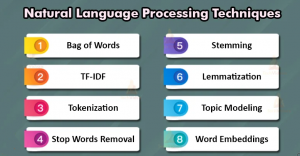
Text Mining
Text mining delves deep into textual data to extract patterns, relationships, and knowledge. It’s the process of discovering valuable insights from text by using techniques from various disciplines, including information retrieval, machine learning, and linguistics. Text mining involves tasks such as clustering documents with similar content, classifying texts into predefined categories, and extracting entities like names, dates, and locations. This process is invaluable in industries ranging from healthcare to finance, where large volumes of text can hold answers to critical questions.
Natural Language Understanding
At the core of NLP lies Natural Language Understanding (NLU). NLU goes beyond mere syntax and delves into the semantics of language. It empowers machines to comprehend context, disambiguate meanings, and draw accurate inferences. NLU is the reason behind the success of voice assistants that can parse spoken language and extract meaning. This technology allows machines to truly understand the user’s intent, enabling them to provide accurate responses and carry out complex tasks.
Text Preprocessing
Before diving into analysis, text preprocessing plays a pivotal role in ensuring accurate results. Text preprocessing involves a series of steps, including tokenization, stemming, and removing stopwords. Tokenization breaks down text into individual words or phrases, making it easier for analysis. Stemming reduces words to their root form, aiding in consolidation and eliminating redundancy. Removing stopwords involves eliminating common words like “and,” “the,” and “is,” which might not add significant value to the analysis. Proper text preprocessing sets the stage for meaningful insights.
“Text processing is the art of unraveling the intricate tapestry of language, transforming words into knowledge and information into insight, all while navigating the labyrinth of human expression.” — Richard Larson
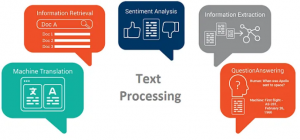
Data Cleaning Techniques
In the world of data analysis, “garbage in, garbage out” holds true. Data cleaning is essential to ensure that the analyzed text is accurate and reliable. Techniques like removing duplicates, handling missing values, and correcting errors play a vital role in refining the data. With clean data, analysis and NLP techniques can yield more dependable results, making decision-making more informed and effective.
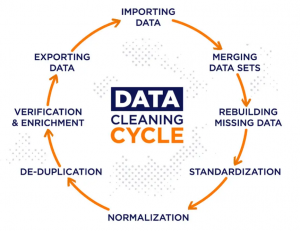
Textual Analysis Definition
Textual analysis is the art of dissecting and interpreting textual content to reveal underlying meanings, cultural implications, and sentiments. It involves closely examining word choice, syntax, and context to uncover insights that might not be immediately apparent. Textual analysis finds its applications in fields like literary criticism, media studies, and even marketing, where understanding the tone and context of customer feedback can shape strategies and campaigns.
Textual Research
Textual research is a cornerstone of academic and historical investigation. Scholars meticulously analyze written records to unearth historical facts, cultural trends, and societal shifts. In academia, textual research forms the basis for groundbreaking theories and insights. Similarly, in the marketing realm, analyzing textual content from customer reviews and social media discussions can provide valuable insights into consumer preferences and sentiments.
Textual research is an indispensable cornerstone of academic and historical exploration, offering a meticulous lens through which to decipher the rich tapestry of human thought and cultural evolution. By delving into textual artifacts, whether ancient manuscripts, literary works, or archival records, researchers uncover hidden narratives, linguistic nuances, and societal contexts that breathe life into history and literature. With each scrutinized word, textual research illuminates the pathways of human expression, preserving the legacy of generations past and facilitating a deeper understanding of the intricate threads that weave together our collective story.
Source: “The Craft of Research” by Wayne C. Booth, Gregory G. Colomb, and Joseph M. Williams
Text Analytics Software
As the demand for text analysis grows, so does the availability of specialized software. Text analytics software simplifies the process by offering tools to analyze and visualize text data. These software solutions often include features like sentiment analysis, topic modeling, and trend detection. Businesses can harness these tools to gain actionable insights from customer feedback, social media conversations, and market trends.
Text Mining in Python
Python has emerged as a preferred language for text mining and NLP due to its rich ecosystem of libraries and tools. Libraries like NLTK, spaCy, and scikit-learn provide robust functionalities for tasks such as tokenization, part-of-speech tagging, and text classification. Python’s versatility and ease of use make it a go-to choice for both beginners and experienced data scientists alike.
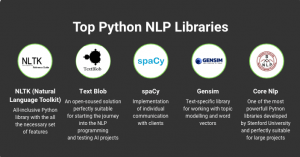
NLP Methods
NLP methods can be broadly categorized into two main approaches: rule-based methods and machine learning methods. Rule-based methods involve designing explicit rules to process and understand language. Machine learning methods, on the other hand, allow computers to learn patterns from data and adapt to new language structures. These methods work in tandem to power a wide array of applications, from chatbots that hold conversations to sentiment analysis tools that gauge public opinion.
NLP Examples
NLP’s influence can be witnessed across industries. In customer service, chatbots provide instant support and information to users. Social media sentiment analysis tools help brands understand public perception and adjust strategies accordingly. Machine translation services bridge language barriers, enabling global communication. The world of NLP is filled with examples that showcase its potential to revolutionize how we interact with technology and information.
There are some popular NLP examples in real word :
- Sentiment Analysis: Analyzing social media comments to determine whether they express positive, negative, or neutral emotions.
- Named-Entity Recognition: Identifying and categorizing entities like names, dates, and locations within a text.
- Text Summarization: Condensing lengthy articles into concise paragraphs while preserving key information.
- Machine Translation: Translating text from one language to another using algorithms that understand linguistic nuances.
NLP Services
Various services offer NLP capabilities through APIs, making it easier for businesses to integrate advanced language processing into their applications. Cloud-based NLP services provide functions like entity recognition, language translation, and sentiment analysis. These services eliminate the need for building NLP models from scratch and expedite the development process.
NLP Tools
NLP tools play a crucial role in simplifying complex tasks. Libraries like spaCy offer pre-trained models for tasks like named entity recognition and part-of-speech tagging. NLTK provides a comprehensive suite of NLP tools for tasks ranging from tokenization to syntactic analysis. These tools empower developers and data scientists to focus on solving problems without getting lost in the intricacies of language processing.
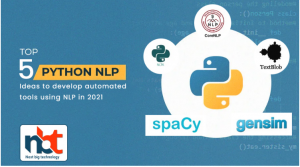
NLP Platforms
NLP platforms offer end-to-end solutions that encompass data preparation, model building, and deployment. These platforms provide intuitive interfaces that allow users to train NLP models with minimal coding effort. By democratizing NLP, these platforms enable organizations to harness the power of language processing without the need for extensive technical expertise.
NLP Frameworks
NLP frameworks provide the building blocks for creating custom NLP models. Frameworks like TensorFlow and PyTorch offer pre-built neural network components that can be tailored to specific tasks. By leveraging these frameworks, developers can build and fine-tune models that understand and generate human language, paving the way for innovative applications.
NLP Algorithms List
The world of NLP encompasses a plethora of algorithms, each designed to tackle specific language processing tasks. From support vector machines for text classification to Word2Vec for word embeddings, these algorithms form the backbone of NLP techniques. Understanding the capabilities of these algorithms empowers practitioners to choose the right tools for the job.
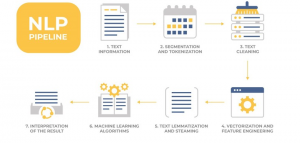
NLP Benefits
The adoption of NLP techniques brings forth a multitude of benefits. Businesses gain insights into customer opinions, enabling them to refine products and services. Researchers automate the analysis of vast textual datasets, accelerating the pace of discovery. Marketers craft personalized campaigns based on customer sentiments, enhancing engagement and loyalty.
NLP Challenges
While NLP holds immense promise, it’s not without challenges. Ambiguity, context understanding, and the ever-evolving nature of language present hurdles. Training robust models requires substantial computing power and data. Ensuring ethical and unbiased outcomes also poses concerns. Recognizing and addressing these challenges are vital for harnessing the full potential of NLP.

Conclusion
In the modern age, where language fuels communication and information, the fusion of text analysis and NLP techniques emerges as a beacon of insight. By understanding the nuances of language, businesses, researchers, and marketers can uncover hidden truths and transform words into actionable intelligence. As technology continues to advance, the journey into the realm of text and language promises to yield discoveries that shape industries, societies, and the way we navigate our world.